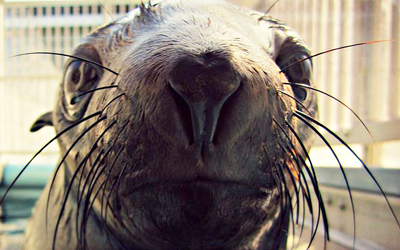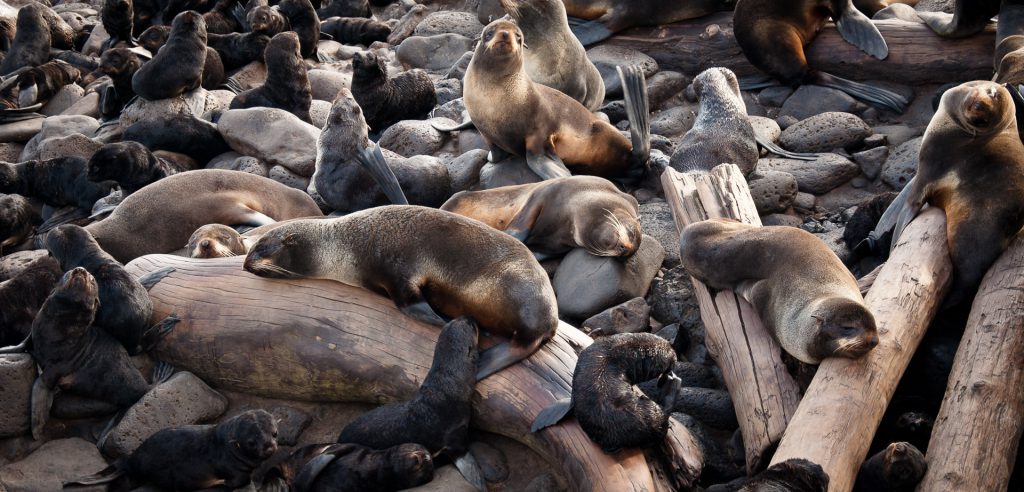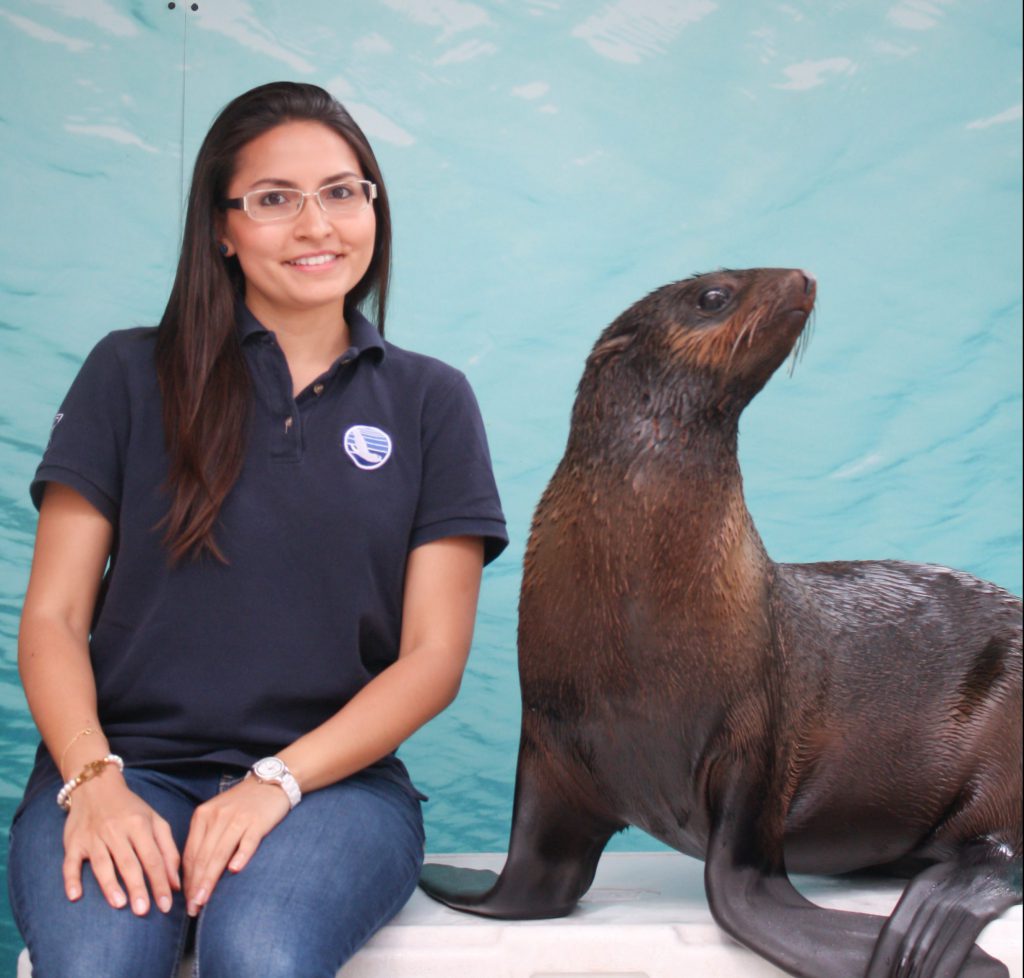
Which prey offer the greatest energetic return?
In the remote reaches of the Bering Sea, the Pribilof Islands were once home to the world’s largest population of northern fur seals. However, the population has been declining for over 4 decades and scientists do not know why.

Northern fur seals have declined on the Pribilof Islands by over 80%.
One theory suggests that the types of prey available to northern fur seals have shifted, from an abundance of fatty fish to more protein-rich fish. Could this change in diet make it more difficult for fur seals to obtain the energy they need?

Mariana Diaz Gomez with Tikva.
In a new Consortium study led by Mariana Diaz Gomez (The University of British Columbia), scientists measured the effects of different diets in six female northern fur seals housed at the Vancouver Aquarium. The results showed that some types of prey were significantly easier to digest and offered far greater energetic returns.
“We were able to quantify and test something that has only been hypothesized, but not measured, for over two decades,” says Diaz Gomez. “We measured what went in, measured what it cost to digest, and then measured what came out. This allowed us to calculate how much energy the fur seals gained from eating different diets.”
Crash diet
“Imagine you are at a party that offers only celery sticks, candy and popcorn,” explains Diaz Gomez. “That low-quality food won’t sustain you, even if there’s plenty of it. You’ll be hungry by the time you get home.”
Similarly, northern fur seals in the Bering Sea—who have relatively little control over their diet—may be forced to rely on their own junk food: young pollock. Diaz Gomez found that although these high-protein fishes are abundant, they offer little energetic return when eaten because of digestive costs.
“Prey with a lot of protein and little fat require a huge amount of energy to break down and absorb,” she says. “When our fur seals ate a lot of these types of fish, they absorbed as much of it as possible and didn’t produce much feces. There was almost nothing left over.”

The energetic cost of digesting different types of fish was determined inside this metabolic chamber by measuring the amount of oxygen the fur seal consumed, and the amount of carbon dioxide produced during digestion.
Conversely, fish that were high in fat, such as herring, required the least energy to digest and resulted in the highest energetic gain.
Quality vs. quantity
“Our take-home message is that when it comes to diet, quality is more important than quantity and even diversity,” says Diaz Gomez. “If northern fur seals can sustain a high-quality diet of fatty fish and squid, they don’t need a lot of it. But if they rely on low-quality pollock, they must eat much more to realize the same energetic gains.”
The results provide further support to the nutritional stress hypothesis, and provide a good foundation for future discussions on how humans and marine mammals can share resources in a fragile and dynamic ocean ecosystem.
 PUBLICATION
PUBLICATION
|

|

 |
||||||||||||
